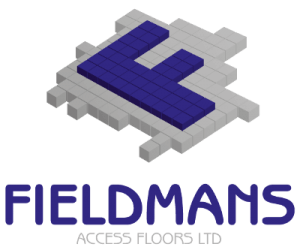Are you designing new office or data centre flooring and considering whether or not raised flooring is the right option for you? Raised flooring is becoming increasingly used in a variety of spaces where significant amounts of computer and telecoms equipment are required or where there is a need for storage space, including:
- Offices
- Call centres
- Switch centres – e.g. for telecoms facilities
- Data processing centres/server rooms
- Distribution/warehousing facilities
- Educational facilities or libraries
- Retail spaces
- Clean rooms – e.g. pharmaceutical areas
A few things to weigh up when you are considering whether or not a raised floor is right for you include:
Storage
Do you need lots of storage space? Perhaps you are managing a small retail area where storage is at a premium, or a flexible office space that may require regular reconfiguration and variable amounts of storage depending on the tenants in place at any given time. For larger retail spaces, including department stores, additional storage space that is more easily accessible than getting to and from a warehousing area could make a substantial difference to sales and better use of staff time.
Computer/telecoms equipment
For those spaces that have large amounts of computer equipment, there will be a corresponding need for cabling which can be substantial. This also applies to electrical cabling and links to power/socket connections.
Climate control
Certain types of warehouse and distribution facilities, as well as data centres, will need significant amounts of cooling to ensure that products do not spoil or that servers do not overheat. Raised flooring is ideal in such circumstances as cooling systems can be connected across large areas with smaller switch locations that have easy access for maintenance and repair.
Fire suppression
Applicable over large areas in particular, fire suppression and detection location points under raised floors can be especially useful in tackling and containing a fire.
Flexibility
For areas that have a high churn rate – i.e. a large turnover of occupiers – such as managed or serviced offices that typically rent space for shorter amounts of time – a raised floor enables easy and quick connectivity to computer and telecoms equipment while reducing the need for significant expense or time for reconfiguration.
Ease of maintenance
This could be for whatever is stored under your flooring – such as cabling – or structural maintenance. With access across a wider area maintenance activities can be targeted without causing widespread disruption to others using that space.
Alternatives to raised floors
There are a number of alternatives which have a number of pros and cons. Suspended ceilings are one, which can be useful for heating and ventilation systems; however, maintenance activities have to be done at height which is both a health and safety consideration as well as an option that can cause greater disruption across an open office or retail space. Skirting is good for cabling, but does not allow for any other uses and can still be tricky to manage for larger areas. Finally, specialist furniture that offers storage options is great for that use but not suitable for cabling/computer equipment requirements.
For advice on raised floors and how they can work for your space, our expert team at Fiedmans Access Floors is on the end of a phone on 020 8462 7100. Call us for an initial chat or to arrange for your free, no-obligation site survey.
